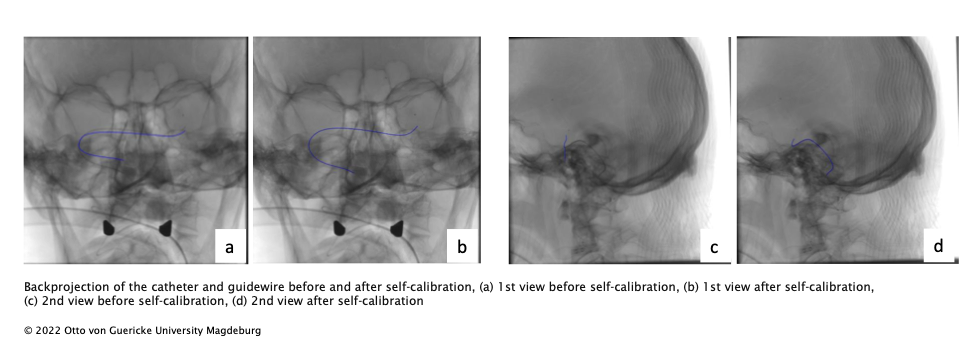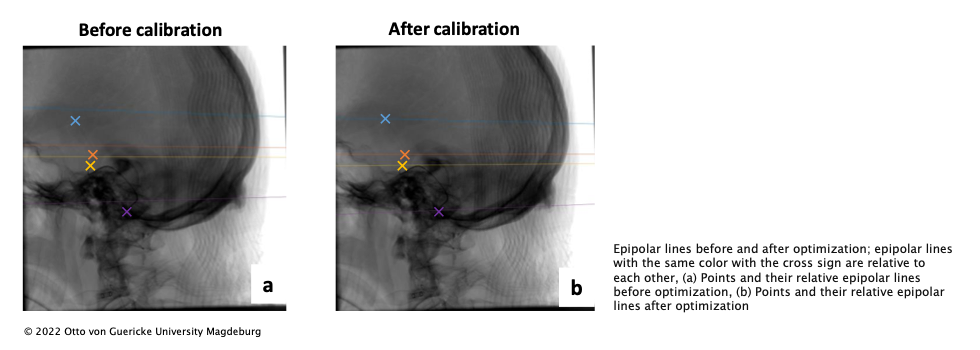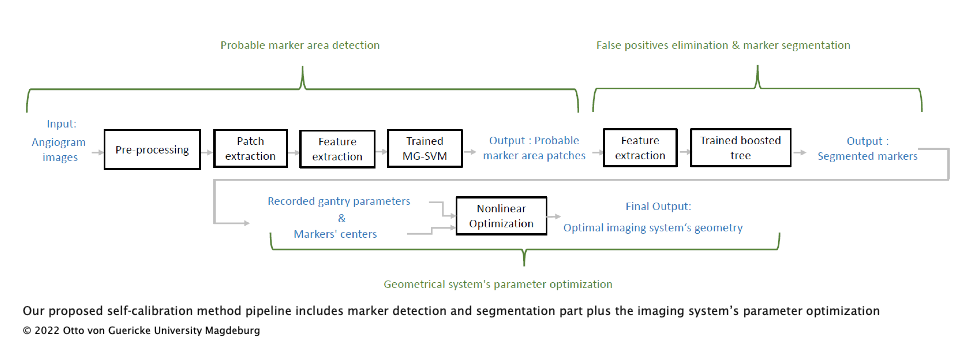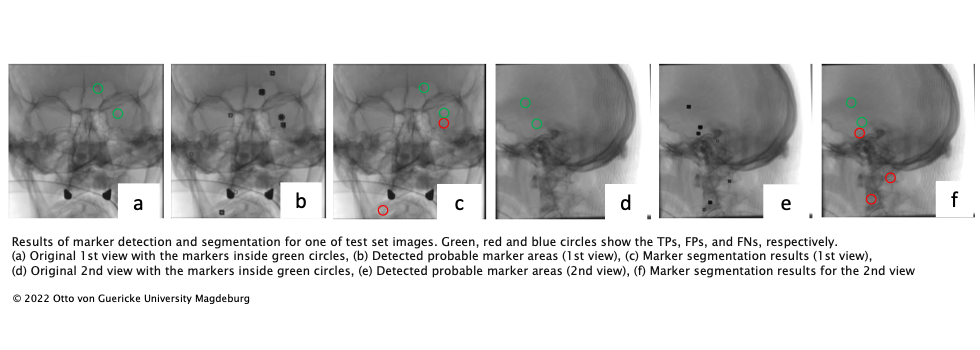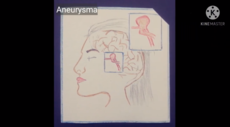Model-based reconstruction methods for CT perfusion imaging
...
M1.6 | Stent detection and enhancement
Funding period: Sep 2017 to Jun 2022
Researchers: Negar Chabi, Samuel Manthey
Wrap-up
Keywords: self-calibration, biplane X-ray imaging system, perspective projection, DSA
Background:
Digital subtraction angiography (DSA) has been the gold standard for imaging the vascular and cerebrovascular systems. In X-ray angiography studies, 3D-DSA can provide more detailed information than DSA alone when investigating neurological lesions. However, accurate and robust reconstructions require calibrating the c-arm gantry parameters. Calibrating an imaging system using a calibration phantom or with self-calibrating techniques provides an accurate geometry description. Despite providing reliable results, calibration phantoms are not suitable for use in an interventional setting due to interference with already complex clinical settings. However, the self-calibration techniques can serve this purpose by imposing a small change on clinical workflow. Many previous studies used vascular structures to estimate the system’s exact geometry.
Objective:
However, utilizing interventional devices and their relative features may be less challenging, as they are unique in different views. A semi-automatic algorithm for self-calibrating an X-ray angiography system for neuroradiology based on the markers attached to the interventional instruments was presented.
Methods:
A novel machine-learning-based technique was proposed for marker extraction. The markers served as a reference for optimizing the system's geometry.
Results:
The method is evaluated on several clinical datasets and phantom angiograms prior to and after self-calibration, catheter or guidewire back projection error was 7.13 ± 6.47 mm and
0.10 ± 0.06mm, respectively. The 3D root-mean-square error (RMSE) for some known points in the phantom reduced from 0.51 ± 0.11 to 0.31 ± 0.08 mm.
Conclusions:
This approach is essential for accurate 3D vessel reconstruction or post-processing of angiography systems that require accurate geometry parameters. As a future step, we try to calibrate the system using the catheter or guidewire.
Originality:
See "Methods".





